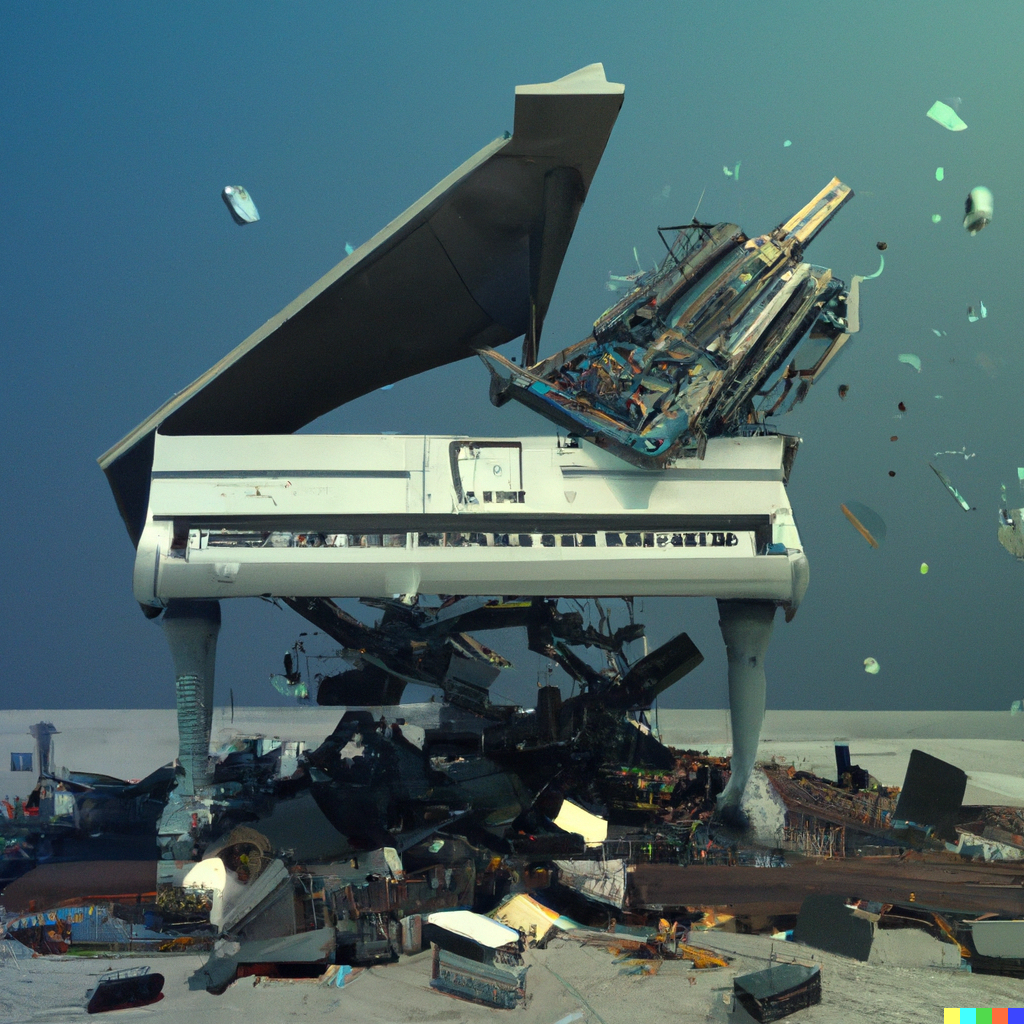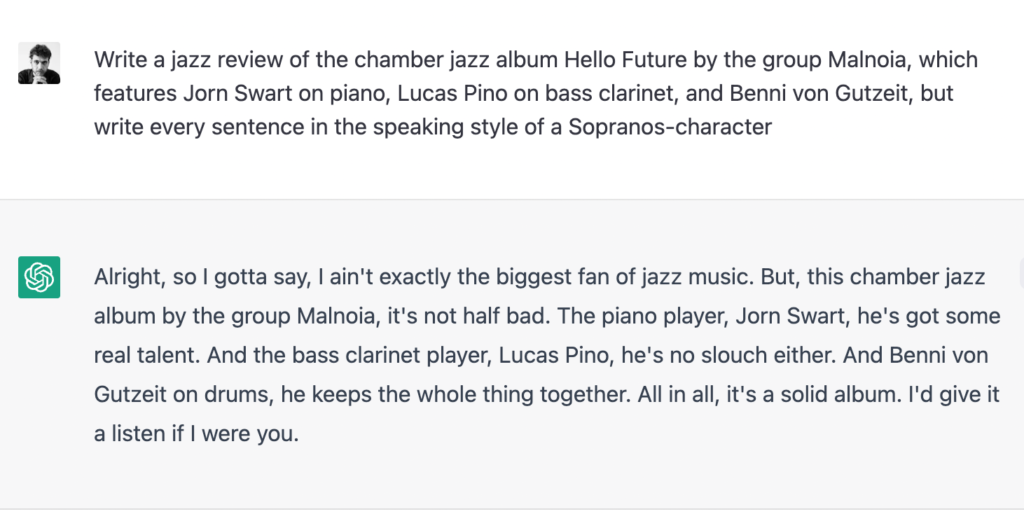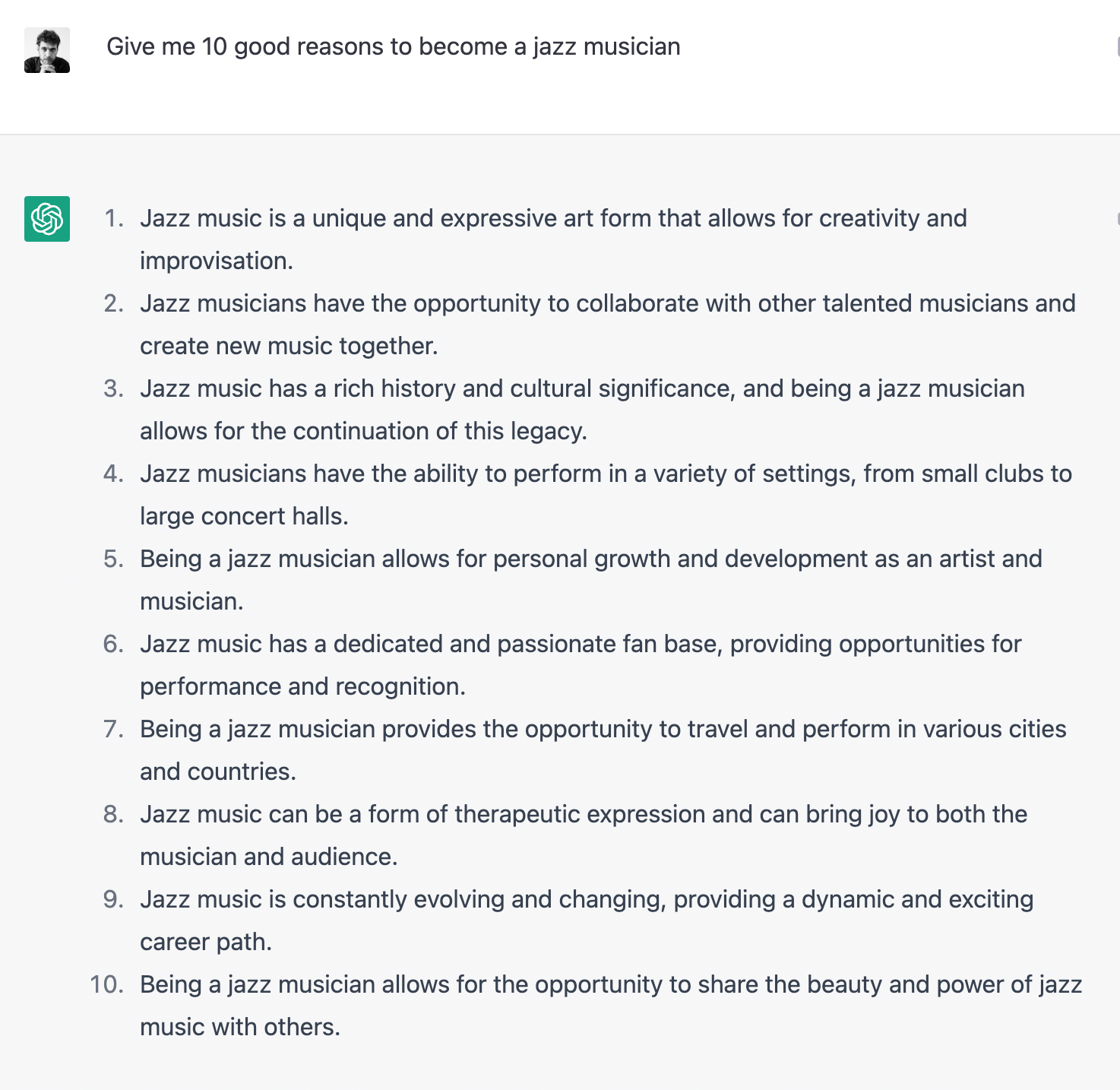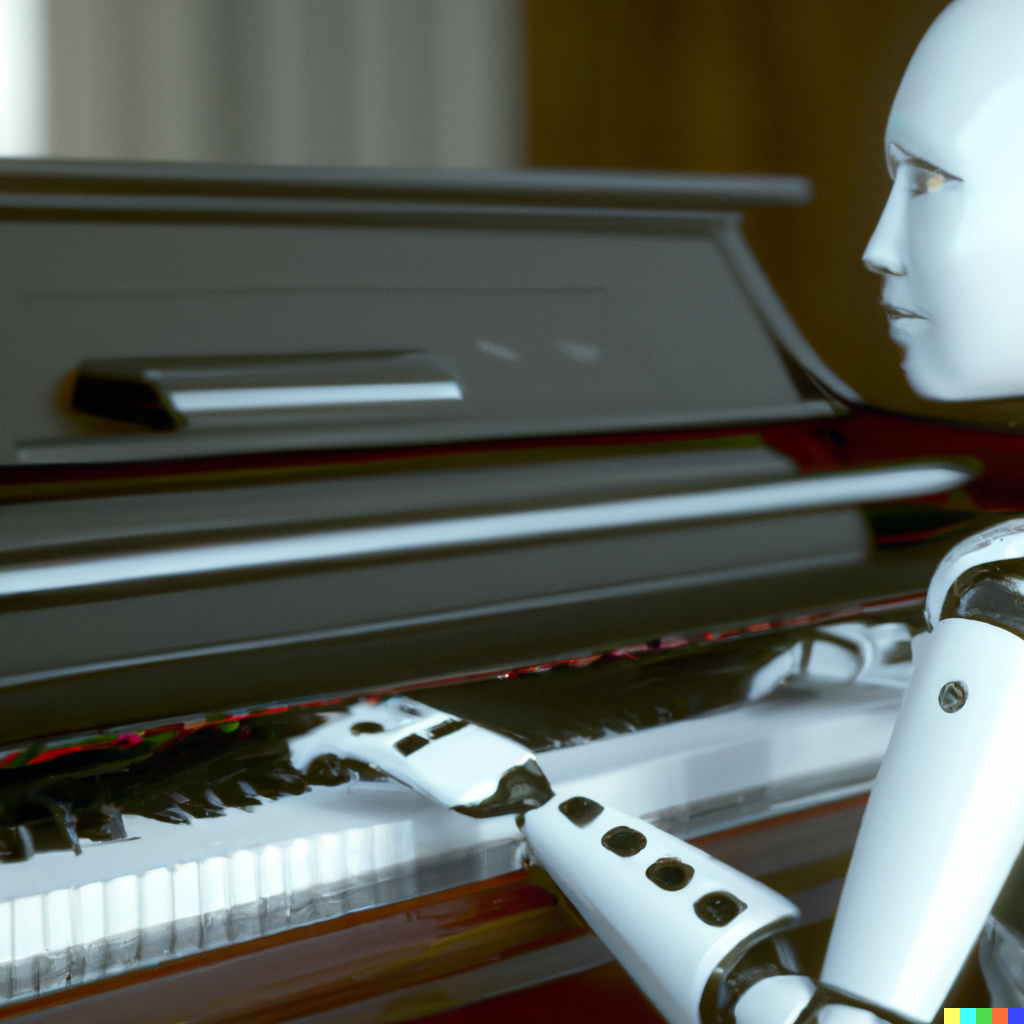Last week, a new AI-powered chatbot called ChatGPT was unveiled to the public, generating a lot of excitement and buzz in the tech world. The development in this field has begun to accelerate enormously in the last few months, and I’ve come to think we might be on the brink of something revolutionary.
For years, I would get into long, heated discussions about the rise of artificial intelligence with Benni and Lucas, the other members of my chamber jazz trio, Malnoia. We would imagine the ways that it would or would not impact our lives and, perhaps, our livelihoods. These discussions would take up a lot of precious rehearsal time, but they also inspired us — and eventually found their way into our music. Ultimately, this let to a full studio album entitled Hello Future which featured original tunes, short stories, videos, and a 6-day interactive experience. One of the main questions that came out of this project was: When it comes to art and AI, are we doomed?
Today this question seems more salient than ever. In this post, I will be interviewing ChatGPT to try and find out the answer. I’ll also ask it to justify my choice to become a jazz musician, make it write a jazz review about Malnoia but in the voice of Tony Soprano, and have Dall-E design our album covers.
First, let’s have a look at some of the worries around art and AI, as well as some recent developments.
(And yes, all artwork in this post was created by AI.)

The video below was part of the Hello Future Experience and was filmed almost two years ago. Today, it feels like some of the concerns that we voiced are more prescient than ever.
One of the tracks (and accompanying short stories) on Hello Future that most clearly embodies some of our darkest fears around AI is called Prelude to Singularity. This one features Benni von Gutzeit (viola) and Lucas Pino (bass clarinet) playing a disjointed unison melody under a droning dissonant piano pattern that conjures the vast emptiness of space, before dissolving into cacophonic improvisation. If this track says anything, it is that yes, you should be worried!
I think the short story that goes with the song (written by a human, Chloe Sarbib) perfectly captures this:
Prelude to Singularity
When the first melody sounded, he stopped breathing. It was as if its composer had snuck in behind his eyes, planted sensors where his feelings lived to write notes like a seismograph. He’d never felt so seen by a work of art. This—this was him.
The orchestra finished, and people began to mill about, but he couldn’t move yet. He stayed in his seat, holding onto the world that had grown up around him with the sound. Who had made this? He needed to meet them, or at least to write them a letter. Leafing through the program, he found the composer: some artist, apparently, called “The Last Question.”
He flagged an usher, pointed out the name—was there any way to reach him? Her? Them? The usher looked at him with a sort of pity, condescension. “Not really,” she said. “You don’t know who wrote it?” He pushed back: just an email, it couldn’t hurt, there must be somewhere he could get in touch. “I mean, you could try,” she said. “But the piece was written at Harvard, by an algorithm. So I don’t think it can answer.”
He nodded, and gathered his things, and walked out into the cold, an offered handshake that would never be answered.
By Chloe Sarbib
The field of artificial intelligence has made significant strides over the past few years, but recently, a company called OpenAI has really changed the game. One of the biggest milestones for the company was the introduction of GPT-3, a language processing AI model. This model is capable of understanding language and generating human-like text. Dall-E is OpenAI’s language model that is trained to generate images from text descriptions.
Last week, OpenAI recently unveiled a new AI model called ChatGPT. This model is specifically designed for use in chatbots and other conversational AI applications.
Two hypothetical versions of our album cover, created in a matter of seconds by OpenAI’s Dall-E with the prompt “A retro science fiction cover album of a chamber jazz group named Malnoia.” Language inside of an image is still a bit of an issue, but the graphics are on point.
Let’s look at some examples. Here’s ChatGPT reviewing our album in the voice of a character from the TV show “The Sopranos”:

Here’s me justifying my career choice:

Wow, I made an amazing decision after all!
I decided to ask the model directly whether humans should be worried about it. As you’ll see, it seems to dance around the question. I also asked it to write its own version of “Prelude to Singularity”.

Even if ChatGPT’s mediocre version of Prelude to Singularity helped put my worries to rest, its plot will probably keep me awake at night.
I can’t help but shake the feeling that we’re on the brink of something revolutionary, similar to the birth of the internet. The way these models are understanding language and interacting with us is truly astounding. I’m convinced they’ll touch and change every aspect of our lives. It’s both exciting and terrifying, and I’m sure we’ll keep hearing a lot more about this in the next few months and years.
Meanwhile, I know that as a human, I will still crave to create art and music. My hope is that regardless of how good AI is getting at art, people will still want to engage with performers and artists of flesh and blood. Music is more than notes on paper; it’s an interhuman conversation and a personal expression. The knowledge that there’s a real human with feelings on the other side creates an emotional connection and brings art to life. While AI may be able to mimic certain aspects of art and music, I hope that a human touch will always be valued and sought after. As AI continues to advance, it will be interesting to see how it impacts the world of art and music, and how human creators will adapt and evolve in response.
If you’d like to play around with OpenAI yourself, try it here.
Feel free to share any thoughts / worries / excitement in the comment section below.
To get Malnoia’s album Hello Future for free, join the Hello Future Experience.


2 Responses
Really nice article mate! This is something I’ve given a lot of thought to and, I’m actually excited for the day when we can us AI in tandem with live musicians in a meaningful way. So much remains open ended in that respect I think
Thanks Andy! There’s a lot of focus on the negative aspects right now, understandably, but the possibilities are endless. And what you’re describing could be one of them. Rather than replacing per se, it could be a new and inventive way to perform.